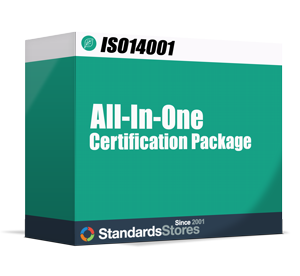ISO 14001:2015 and Regulatory Compliance
ISO 14001:2015 requires organizations to meet all state, local and federal regulations.
ISO 14001 imposes three related requirements:
- The organization’s EMS is required to understand and comply with all relevant environmental laws and regulations, for example any regulations set by the EPA. This needs to go further than just documentation, the organization must make every effort to fulfill its commitment to do what it says it is going to do.
- An organization is required to identify all of its environmental legal obligations and be familiar with all relevant environmental laws and regulations. In addition, the organization is required to have a process for guaranteeing that any new legal obligations are identified in a timely fashion. To keep up to date with the requirements you may consider subscribing to a service like Nimonik.com or BLR.com.
- Compliance with identified legal requirements must be evaluated on a periodic basis set by your organization. Whenever you decide to complete compliance audits or a variety of monitoring activities, your organization is required to make sure that you are aware of all legal requirements are being met. If any regulatory noncompliance is found, the organization must take action to correct this noncompliance and also take measures to ensure that it does not happen in the future.
These requirements do not impose specific performance standards on organizations. ISO 14001, along with the national laws and regulations makes it impossible to establish parameters for air emissions, water discharges and other similar environmental impacts. Each organization needs to approach these requirements within the context imposed by national, state or provincial, and local laws. U.S. regulatory agencies and registrars have different expectations about the ways in which a company addresses these three requirements.
Quality Managers Beware
Many companies that have implemented ISO 14001:2015–environmental management system (EMS) also have a quality management system (QMS) in place. Oftentimes organizations will designate the QMS representative to also be the EMS representative. Taking on this role is even more so common when your organization has integrated the two systems together. Although this is not always a bad things, many times quality assurance managers are unfamiliar with the requirements of ISO 14001- especially in regards to regulatory compliance. Little exposure to environmental regulatory requirements leads to questions concerning the role ISO 14001 plays in ensuring regulatory compliance.
For additional information regarding ISO 14001 and Regulatory Requirements you may consider subscribing to Nimonik.com or BLR.com


